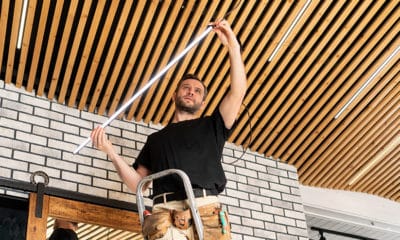I VISIT A LOT of printing companies to assist with managing color. Time and time again, I see very similar issues stemming from the notion that technology solves problems.
Sorry, but it’s not the solution. Sure, increasing print production output and attaining better quality or opening an avenue to new markets with technology is always a smart choice, but what gets lost is the need for basic controls to ensure consistent and repeatable print output, regardless of the operator or technology. Some of this has to do with technology, but most has to do with basic checks and balances to minimize color variance.
Temperature and Humidity
Many printing companies don’t consider how ambient conditions affect color. Having the temperature and humidity gradually change during the day invariably introduces a color shift. It’s common for me to see freight doors open while it’s raining outside with no HVAC system in place. The color approved under these conditions slowly changes as the temperature and humidity of the summer sets in. To compensate, more frequent calibrations can bring things back in line, but at the expense of the time required to manage this change. Minimizing temperature and humidity fluctuations helps reduce color shifts.
Consistent and Repeatable Color Measurement
You made the right decision to invest in a color measurement device – a spectrophotometer – but can you trust the data? When was the last time the spectrophotometer was sent back to the factory for calibration and certification? It’s recommended to send a spectrophotometer back for recertification every 18 months. Of course, you can still measure, but can you trust the measurements? Sending your device back for certification proves you can trust the data collected.
Handheld color measurement devices are a great starting pointing to managing color, but you may find you get different data depending on who is measuring. That’s not good. Upgrading to an automated color measurement option eliminates the human element.
Advertisement
 No, you can’t make your own light box and expect to do color matching. There are defined tolerances for acceptable lighting for evaluating print in ISO 3664.
No, you can’t make your own light box and expect to do color matching. There are defined tolerances for acceptable lighting for evaluating print in ISO 3664.
Lighting
Oh boy. No, you can’t make your own light booth. Sorry.
Lighting is an absolutely critical element in evaluating color. Many times, a company’s chances of failure or success in color matching are directly influenced by the quality of (standardized) lighting. ISO (International Standards Organization) clearly defines the requirement of a light source for printing with ISO 3664. A quick reminder: All color matching in printing assumes you are viewing under Daylight 5000K, or D50. ISO 3664 defines the parameters for meeting the D50 requirement.
When lighting manufacturers have their booths certified for compliance, the certification is for the whole system, not the lamps. Changing the light fixture, ballasts, and distance to viewing plane all will affect color perception. So, you can’t just purchase ISO 3664 compliant lamps and expect those lamps to produce the light quality certified, because the ballast in your light fixture may produce more or less energy, skewing the color temperature. The surrounding of the light box reflects that color back onto the object/print. Even the light fixture background color can skew the color temperature.
Set your employees up for success by controlling the variables they can’t. Invest in making sure temperature and humidity are managed where the printers are located. Upgrade your color measurement technology to be fully automated to remove the human element so it doesn’t matter who measures. Audit how you evaluate color matches to make sure the lighting setup is not imparting a bias. Replace any lighting setup that is not ISO 3664 compliant to eliminate color bias from the lighting. Help your employees be successful!
Advertisement
 No, a printer in a tent is not a climate-controlled condition. Fluctuations in humidity and temperature throughout the year affect color balance – an overlooked variable that directly affects product consistency.
No, a printer in a tent is not a climate-controlled condition. Fluctuations in humidity and temperature throughout the year affect color balance – an overlooked variable that directly affects product consistency.

 VEHICLE WRAPS + GRAPHICS3 weeks ago
VEHICLE WRAPS + GRAPHICS3 weeks ago
 Press Releases3 weeks ago
Press Releases3 weeks ago
 Case Studies3 weeks ago
Case Studies3 weeks ago
 Case Studies1 week ago
Case Studies1 week ago
 Benchmarks3 weeks ago
Benchmarks3 weeks ago
 Press Releases2 months ago
Press Releases2 months ago
 Press Releases3 weeks ago
Press Releases3 weeks ago
 Press Releases2 months ago
Press Releases2 months ago
 No, you can’t make your own light box and expect to do color matching. There are defined tolerances for acceptable lighting for evaluating print in ISO 3664.
No, you can’t make your own light box and expect to do color matching. There are defined tolerances for acceptable lighting for evaluating print in ISO 3664.

















